- Home
- Joyce Carol Oates
Soul at the White Heat Page 2
Soul at the White Heat Read online
Page 2
I am now writing as fast and freely as I have written in the whole of my life; more so—20 times more so—than any novel yet. I think that this is the proof that I was on the right path; and what hangs in my soul is to be reached there. . . . The truth is, one can’t write directly about the soul. Looked at, it vanishes; but look (elsewhere), and the soul slips in.
Virginia Woolf, A Writer’s Diary, February 6–7, 1926
John Updike’s first novel, The Poorhouse Fair (1959), published when the author was twenty-six, is a purposefully modest work composed in a minor key, unlike Norman Mailer’s first novel, The Naked and the Dead (1948), also published when the author was twenty-six. Where Mailer trod onto the literary scene like an invading army, with an ambitious military plan, Updike seems almost to have wished to enter by a rear door, claiming a very small turf in rural eastern Pennsylvania and concentrating upon the near-at-hand, with the meticulous eye of a poet. The Poorhouse Fair is in its way a bold avoidance of the quasi-autobiographical novel so common to young writers; the Bildungsroman of which the author’s coming-of-age is the primary subject. Perversely, given the age of the author, The Poorhouse Fair is about the elderly, set in a future only twenty years distant and lacking the dramatic features of the typical future, dystopian work; its concerns are intrapersonal, and theological. By 1959 Updike had already published many of the short stories that would be gathered into Olinger Stories one day, which constituted in effect a Bildungsroman, freeing him to imagine an entirely other, original debut work.
The Poorhouse Fair, as Updike was to explain in an introduction to the 1977 edition of the novel, was suggested by a visit, in 1957, to his hometown Shillington, which included a visit to the ruins of a poorhouse near his home. The young author then decided to write a novel in celebration of the fairs held at the poorhouse during his childhood, with the intention of paying tribute to his recently deceased maternal grandfather, John Hoyer, given the name “John Hook” in the novel. In this way The Poorhouse Fair both is not, and is, an autobiographical work, as its theological concerns, described elsewhere in Updike’s work, were those of the young writer at the time.
Appropriately, Updike wrote another future-set novel near the end of his life, Toward the End of Time (1997), in which the elderly protagonist and his wife appear to be thinly, even ironically disguised portraits, or caricatures, of Updike and his wife in a vaguely post-apocalyptic world bearing a close resemblance to the Updikes’ suburban milieu in Beverly Farms, Massachusetts. Is it coincidental, that Updike’s first novel and his (near-to-last) so mirror each other? Both have theological concerns, and both are executed with the beautifully wrought, precise prose for which Updike is acclaimed; but no one could mistake Toward the End of Time, with its bitter self-chiding humor, and tragically diminished perspectives, with a work of fiction by a reverent and hopeful young writer.
Love at first sight. In literary inspiration, as in life, such a blow to one’s self-sufficiency and self-composure can have profound, ambiguous consequences. For here is another sort of inspiration which we might call the encounter with the Other.
He had been a highly successful young writer with his first two novels, quickly written in his early twenties following his seafaring adventures in the South Seas—Typee: A Peep at Polynesian Life (1846) and Omoo: A Narrative of Adventures in the South Seas (1847). Now he was working energetically on a third seafaring novel narrated in a similar storytelling voice, this time set on a New England whaling ship called the Pequod. (As a young man, he’d sailed with a New Bedford whaler into the South Pacific where, after eighteen months, he’d jumped ship in a South Seas port; going to sea, for Herman Melville, was “the beginning of my life.”) And now he was working industriously on this new novel when a book of short stories came into his house—Nathaniel Hawthorne’s Mosses from an Old Manse, which had been published a few years before, in 1846.
Melville, at thirty-one younger than Hawthorne by fifteen years, read this collection of anecdotal and allegorical tales with mounting astonishment. There was the affable, sunny Hawthorne, as he seems to have been generally known to contemporary readers, and there was the other, darker and deeper Hawthorne: “it is that blackness in Hawthorne . . . that so fixes and fascinates me.” (“Hawthorne and His Mosses”) Soon, Melville was moved to write the first thoughtful appreciation of Hawthorne, “Hawthorne and His Mosses” (1850), in which Melville speculates that “this great power of blackness in Hawthorne derives its force from its appeal to that Calvinistic sense of Innate Depravity and Original Sin, from whose visitations no deeply thinking mind is always and wholly free.”
Hawthorne’s influence upon Melville was immediate and profound. What would have been another seafaring adventure tale, very likely another best seller, was transformed by the enchanted Melville into the intricately plotted, highly symbolic and poetic Moby-Dick, the greatest of nineteenth-century American novels, as it is one of the strangest of all American novels; Hawthorne seems to have entered Melville’s life at about chapter twenty-three of the new novel, transforming its tone and ambition. Again, one is moved to think of a flammable material into which a struck match has been cast, with extraordinary, incendiary results. For Melville was consumed by Hawthorne’s prose style as well as Hawthorne’s tragic vision, which he was to align with the Shakespeare of the great tragedies, and their great soliloquies, as well as with the magisterial poetry of John Milton’s Paradise Lost; the result is a novel that is unwieldy, extravagant, and unique, unsurprisingly dedicated to Hawthorne “in token of my admiration for his genius.” (Moby-Dick was published in 1851, the year of Hawthorne’s The House of the Seven Gables, and a year after Hawthorne’s The Scarlet Letter.) For Melville, this homage to the older Hawthorne seems to have constituted the great passion of his life. From a letter to Hawthorne in 1851:
I felt pantheist then—your heart beat in my ribs and mine in yours, and both in God’s. A sense of unspeakable security is in me this moment, on account of your having understood the book. . . . Whence come you, Hawthorne? By what right do you drink from my flagon of life? And when I put it to my lips—lo, they are yours and not mine. I feel that the Godhead is broken up like the bread at the Supper, and that we are the pieces. Hence this infinite fraternity of feeling. . . . [T]he very fingers that now guide this pen are not precisely the same that just took it up and put it on this paper. Lord, when shall we be done changing? Ah! It’s a long stage, and no inn in sight, and night coming, and the body cold. But with you for a passenger, I am content and can be happy. I shall leave the world, I feel, with more satisfaction for having come to know you. Knowing you persuades me more than the Bible of our immortality.
(See David Kesterson, “Hawthorne and Melville,” online essay)
It’s a bitter irony, and must have been a considerable shock to the ecstatic young Melville, that Moby-Dick, in which he had poured his soul, was, to most readers of the era, including even educated reviewers, unreadable—a great classic, we are accustomed to consider it today, and yet a crushing failure to the young author who would realize only $556.37 from royalties. Reviews were generally negative, some of them savagely negative, even in the U.K., where Melville’s early, South Seas adventure romances novels were overnight best sellers. It was unfortunate that Melville’s British publisher brought out the novel before his American publisher, and had not had time to incorporate Melville’s new title, Moby-Dick, which was to replace The Whale; yet more unfortunate, that the British publisher failed to include the last page of the novel, which includes the epilogue, and that some of the front matter of the manuscript was moved to the end of the book, as an unwieldy appendix of sorts. It was the case at this time that British publishers could remove from a manuscript anything politically questionable or “obscene”—not only without conferring with the author, but also without informing him. On the whole, American reviewers followed British reviewers’ crushing opinions of the novel; not one American reviewer took time to note that the American edition differed fr
om the British.
Like merely human-sized harpooners surrounding a mighty Leviathan, such crude reviewers had the power to kill sales of Melville’s books, and to destroy the energies and hope of Melville’s youth. He continued to write after Moby-Dick but never regained his old optimism. Even his attempt to cultivate a new career lecturing to lyceums soon ended when he couldn’t resist mocking the quasi-intellectualism and pretention of the lyceum circuit. “Dollars damn me,” Melville said—he had not enough of them.
By the time Melville died, in 1891, even his early best sellers were out of print and his name forgotten. (The account that Melville’s name was printed in the New York Times obituary as “Henry Melville” is evidently not true; but a “Hiram Melville” seems to have crept into print a few days later.) Both his sons had predeceased him, the younger, Malcolm, by his own hand. His marriage seems to have been difficult—his wife’s genteel parents kept urging her to leave Melville, on the grounds that he was a heavy drinker, and insane. It is significant that Melville’s final work of fiction, the posthumously published novella Billy Budd, is a starkly imagined allegory of innocence, evil, and tragic atonement so Hawthornian in its prose and vision, it’s as if Melville’s beloved collaborator had assisted him a final time.
“Inspiration” in this instance was ravishing, irresistible, a double-edged sword. In the short run, it led to what seems unmistakably like failure, in the author’s tragic experience; in the longer run, great and abiding posthumous success.
She was stalled in a new, ambitious novel, her seventh, that was to be a “study” of provincial English life. (Her most recent, novel Felix Holt, with a similar ambition, had been published two years before and had had disappointing sales.) She knew the setting well—in fact, intimately: the Midlands of England, in the 1830s. But after a desultory beginning in 1869, Middlemarch was set aside for a year following domestic distractions; uncharacteristically, the highly professional fifty-year-old George Eliot hadn’t been writing on this new novel with much enthusiasm or inspiration.
And then, in May 1870, Eliot and her devoted companion, George Henry Lewes, visited Oxford, where they had lunch with the Rector of Lincoln College and his (conspicuously younger) wife, neither of whom they knew well. The Pattisons were perceived as an oddly matched husband and wife, not only because Francis Pattison was twenty-seven years younger than Mark Pattison but also because while Francis was beautiful, lively, and charming, Mark was a “wizened little man” without evident charm, “prone to depression,” a highly private, reclusive scholar of classics and religion. Clearly, this marriage among unequals made a powerful impression upon George Eliot, who shortly afterward began Middlemarch anew, this time opening with the vivid portrait of Miss Dorothea Brooke: a beautiful, intelligent, and idealistic young woman who makes the grievous error of marrying a much-older clergyman-scholar, the pedantic, self-pitying Edward Casaubon. Just as the Rector’s young wife Francis had hoped to assist him in his scholarly work, so too Eliot’s Miss Brooke hopes to assist her husband in his quixotic effort to write “The Key to All Mythologies.”
(Eventually, Francis Pattison would leave her dull, embittered husband, to live in close proximity to a male friend; after years of stoic resignation as Mrs. Edward Casaubon, Dorothea becomes a widow, and remarries, this time a far more suitable man. As Casaubon never completes “The Key to All Mythologies,” so too Mark Pattison never completed his work of scholarly-historical ambition.)
Deciding to begin Middlemarch not as she’d originally planned, with the young physician Lydgate and the Vincy family into which he marries, but rather with Dorothea (and Casaubon), was indeed inspired, for with this stroke one of the great themes of Middlemarch is forged: the devastation of youthful female idealism under the heavy hand of (patriarchal) convention. Without the impetuous but always sympathetic Dorothea, who, like her American counterpart Isabel Archer (of Henry James’s The Portrait of a Lady) makes a very bad mistake in marriage for which she pays dearly, it is difficult to imagine what Eliot would have made of the more conventional characters of Middlemarch. (It is not surprising, however, that George Eliot would always deny having modeled her fictional married couple on the Rector of Lincoln College and his young wife. Writers would far rather have us believe that they’ve imagined or invented rather than taken “from life”—in Eliot’s case in particular, with her heightened sense of moral responsibility, she would have felt vulnerable to charges of having exploited the Pattisons, who had befriended her.)
“TRY TO BE ONE OF THOSE on whom nothing is lost”—this famous admonition of Henry James suggests the nature of James’s own deeply curious, ceaselessly alert and speculative personality. His inspirations were myriad, and often sprang from social situations, typically for one who “dined out” virtually every night of his adult life. The most frequently recorded of these is James’s inspiration for The Turn of the Screw, which he records in his notebook for January 1895:
Note here the ghost-story told me at Addington (evening of Thursday 10th) by the Archbishop of Canterbury . . . the story of the young children . . . left to the care of servants in an old country house, through the death, presumably, of parents. The servants, wicked and depraved, corrupt and deprave the children. . . . The servants die (the story vague about the way of it) and their apparitions, figures, return to haunt the house and children, to whom they seem to beckon. . . . It is all obscure and imperfect, the picture, the story, but there is a suggestion of a strangely gruesome effect in it. The story to be told . . . by an outside spectator, observer.
CN, Notebook, January 1895)
The “strangely gruesome effect” that most intrigued James was the presence of not one but two ghosts appearing to not one but two innocent children, thus the turn of the screw. It can’t have been accidental that the Archbishop’s tale gripped James when, by his account, in his early fifties, he was severely depressed following the (public) failure of his play Guy Domville (1895), for which James had had great hopes. (Is it a surprise to learn that Henry James, the very avatar of novelistic integrity, the darling of the most mandarin New Critics, in fact had wanted badly to be a popular playwright, and dared to fantasize success in the West End? Imagine poor James’s grief when, at the opening of the play, a section of the audience cruelly jeered him as he stood onstage.) In this state of mind, the emotionally fragile James was particularly susceptible to the eerie “hauntedness” of the Archbishop’s story; he let it gestate for more than two years, then began to write what would be The Turn of the Screw in as entertainingly dramatic and suspenseful way he knew how, to acquire, as he hoped, a new audience in the United States, where sales of his books had languished. Like so much that seems to spring at us from an accidental encounter, The Turn of the Screw had a powerful if perhaps unconscious significance to the author who claimed, in a letter to a friend, that when he was correcting proofs of the story he “was so frightened that I was afraid to go upstairs to bed.” (Gosse 38)
What would be a disadvantage for a certain sort of writer, for whom the autobiographical is primary, was for James an enormous advantage: out of the emotional isolation of his bachelor-life, imagined by Colm Tóibín in The Master as a life of joyless restraint and denial, James was free to imagine the intense, intimate lives of others. The fascination of the governess of The Turn of the Screw for (sinister, sexual) Peter Quint, for instance, is given a particular charge by James’s particular imagination: homoerotic energies so powerfully repressed, they emerge, they erupt, as agents of unspeakable evil. In this elegantly constructed gothic tale much is ambiguous but the atmosphere of yearning—of desperate, humiliating yearning—is unmistakable. We feel that the emotionally starved young governess is a form of the author himself, helpless in her infatuation with the (sexually charged) ghosts of her own imagination and forced, by this infatuation, to enter the tragic adult world of loss.
Another dinner party gave James the kernel for the gossipy/campy excess of The Sacred Fount.
“Where do you
get your ideas?”—the question is frequently asked, and rarely answered with any degree of conviction or sincerity. And rarely is the answer, “A dream.”
Written when Katherine Mansfield was thirty, her short, elliptical story “Sun and Moon” seems to have sprung virtually complete out of a dream. Lyric and fluid like ice melting, a shimmering impressionistic work of fiction, “Sun and Moon” suggests the haunting evanescence of a dream. In her journal for February 10, 1918, Mansfield wrote:
I dreamed a short story last night, even down to its name, which was “Sun and Moon.” It was very light. I dreamed it all— about children. I got up at 6:30 and wrote a note or two because I knew it would fade. . . . I didn’t dream that I’d read it. No, I was in it, part of it, and it played round invisible me. But the hero is not more than five. In my dream I saw a supper table with the eyes of five. It was awfully queer—especially a plate of half-melted ice cream.
Mansfield’s story, for all its delicate filigree, is a chilly prophecy of the destruction of childhood innocence—the “plate of half-melted ice cream” is a little ice cream house that has melted away amid the detritus of an adults’ coarse party from which children are excluded.
THE CHALLENGE WAS TO WRITE a “ghost story”—so Lord Byron had suggested to his friends, with whom he was traveling in Italy in the summer of 1816; and so Mary Wollstonecraft Godwin Shelley, eighteen at the time, recounts a nightmare:
I saw the pale student of unhallowed arts kneeling beside the thing he had put together. . . . I saw the hideous phantasm of a man stretched out, and then, on the working of some powerful engine, show signs of life. . . . His success would terrify the artist; he would rush away [hoping] this thing . . . would subside into dead matter. He sleeps, but he is awakened; he opens his eyes; behold the horrid thing stands at his bedside, opening his curtains.

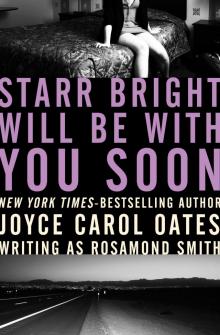 Starr Bright Will Be With You Soon
Starr Bright Will Be With You Soon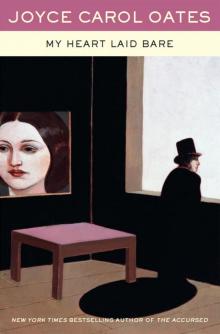 My Heart Laid Bare
My Heart Laid Bare A Fair Maiden
A Fair Maiden The Doll-Master and Other Tales of Terror
The Doll-Master and Other Tales of Terror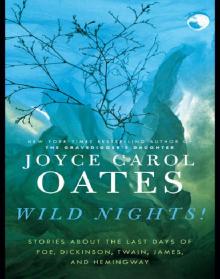 Wild Nights!: Stories About the Last Days of Poe, Dickinson, Twain, James, and Hemingway
Wild Nights!: Stories About the Last Days of Poe, Dickinson, Twain, James, and Hemingway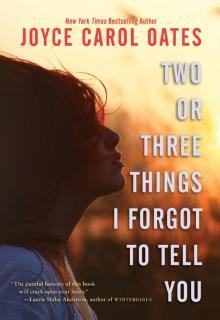 Two or Three Things I Forgot to Tell You
Two or Three Things I Forgot to Tell You Because It Is Bitter, and Because It Is My Heart
Because It Is Bitter, and Because It Is My Heart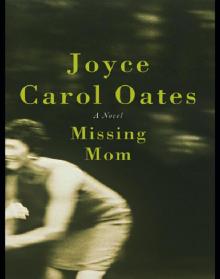 Missing Mom: A Novel
Missing Mom: A Novel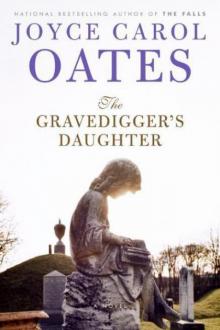 The Gravedigger's Daughter: A Novel
The Gravedigger's Daughter: A Novel American Appetites
American Appetites Black Dahlia White Rose: Stories
Black Dahlia White Rose: Stories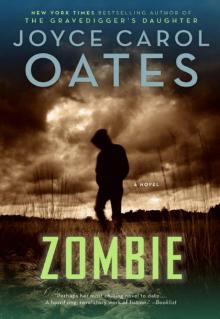 Zombie
Zombie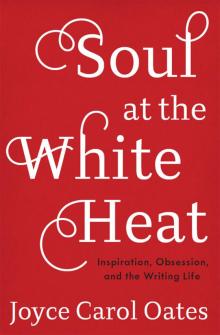 Soul at the White Heat: Inspiration, Obsession, and the Writing Life
Soul at the White Heat: Inspiration, Obsession, and the Writing Life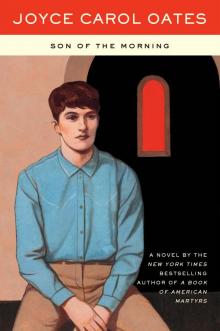 Son of the Morning
Son of the Morning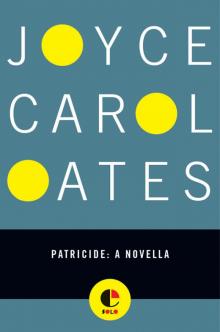 Patricide
Patricide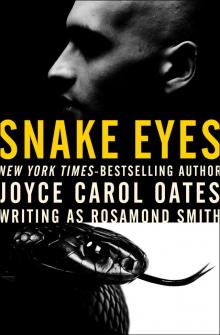 Snake Eyes
Snake Eyes Wonderland
Wonderland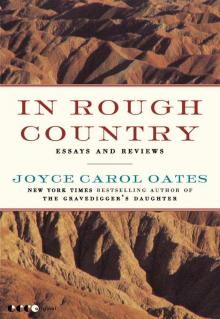 In Rough Country: Essays and Reviews
In Rough Country: Essays and Reviews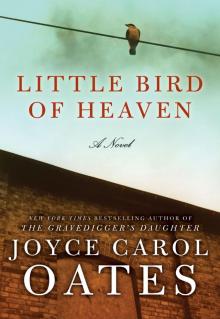 Little Bird of Heaven
Little Bird of Heaven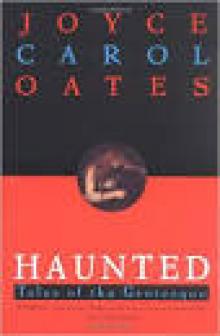 The Haunting
The Haunting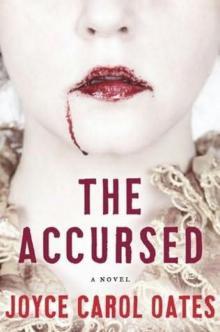 The Accursed
The Accursed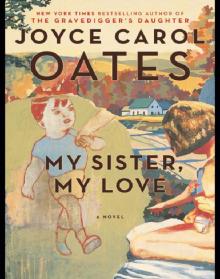 My Sister, My Love: The Intimate Story of Skyler Rampike
My Sister, My Love: The Intimate Story of Skyler Rampike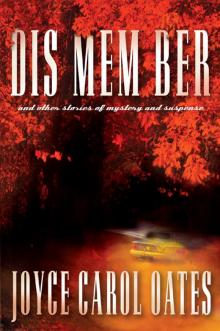 Dis Mem Ber and Other Stories of Mystery and Suspense
Dis Mem Ber and Other Stories of Mystery and Suspense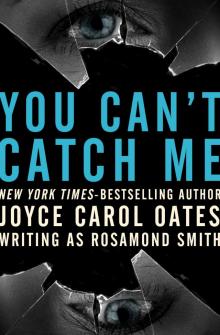 You Can't Catch Me
You Can't Catch Me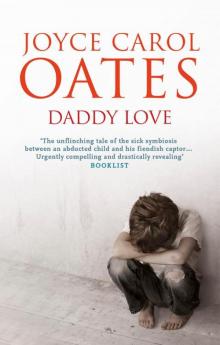 Daddy Love: A Novel
Daddy Love: A Novel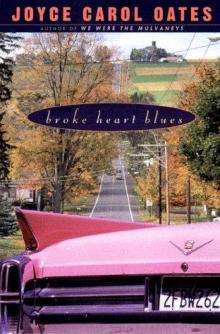 Broke Heart Blues
Broke Heart Blues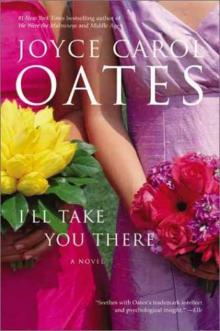 I'll Take You There
I'll Take You There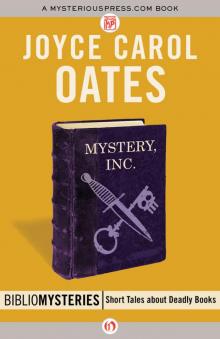 Mystery, Inc.
Mystery, Inc. We Were The Mulvaneys
We Were The Mulvaneys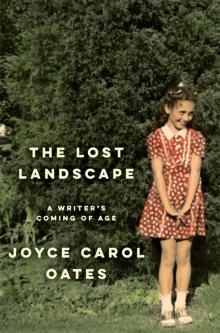 The Lost Landscape: A Writer's Coming of Age
The Lost Landscape: A Writer's Coming of Age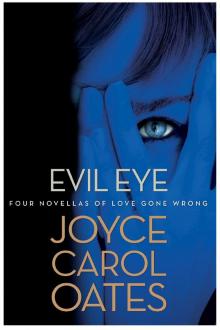 Evil Eye: Four Novellas of Love Gone Wrong
Evil Eye: Four Novellas of Love Gone Wrong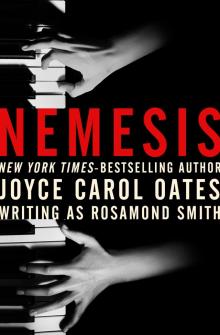 Nemesis
Nemesis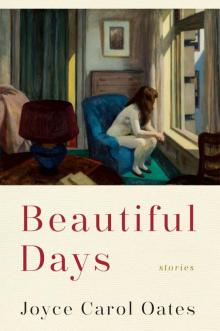 Beautiful Days: Stories
Beautiful Days: Stories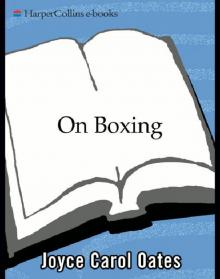 On Boxing
On Boxing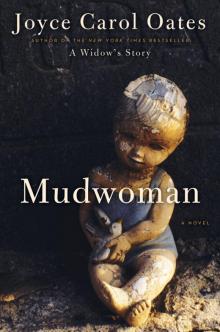 Mudwoman
Mudwoman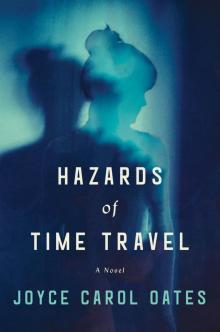 Hazards of Time Travel
Hazards of Time Travel Night-Gaunts and Other Tales of Suspense
Night-Gaunts and Other Tales of Suspense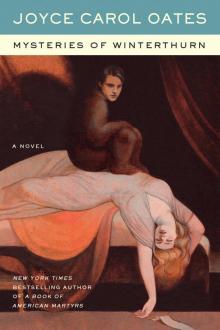 Mysteries of Winterthurn
Mysteries of Winterthurn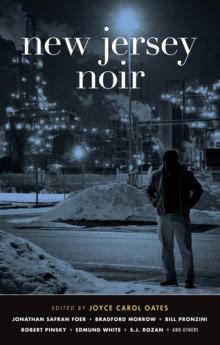 New Jersey Noir
New Jersey Noir Sourland
Sourland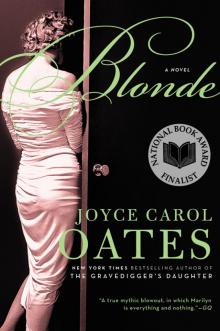 Blonde
Blonde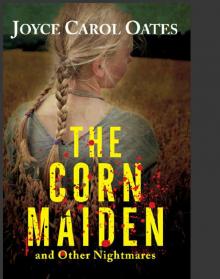 The Corn Maiden: And Other Nightmares
The Corn Maiden: And Other Nightmares The Oxford Book of American Short Stories
The Oxford Book of American Short Stories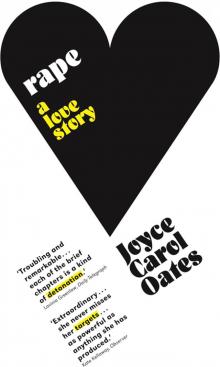 Rape: A Love Story
Rape: A Love Story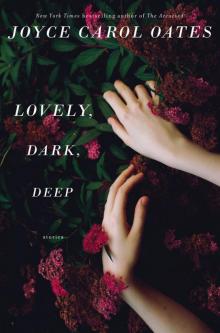 Lovely, Dark, Deep: Stories
Lovely, Dark, Deep: Stories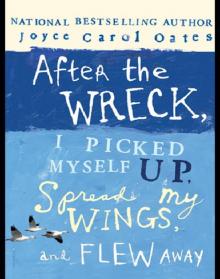 After the Wreck, I Picked Myself Up, Spread My Wings, and Flew Away
After the Wreck, I Picked Myself Up, Spread My Wings, and Flew Away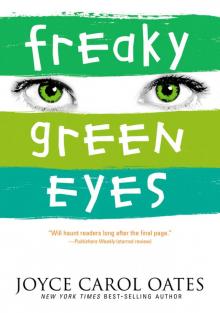 Freaky Green Eyes
Freaky Green Eyes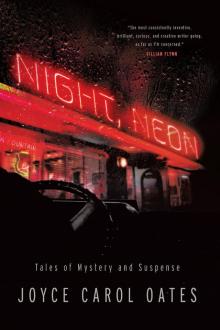 Night, Neon
Night, Neon I Am No One You Know: And Other Stories
I Am No One You Know: And Other Stories Black Water
Black Water Expensive People
Expensive People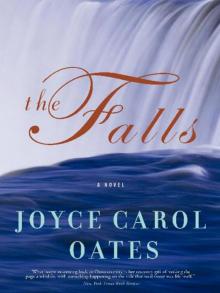 The Falls
The Falls Soul/Mate
Soul/Mate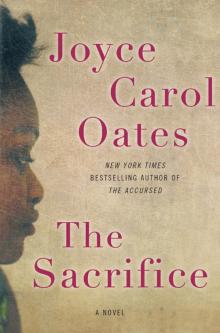 The Sacrifice
The Sacrifice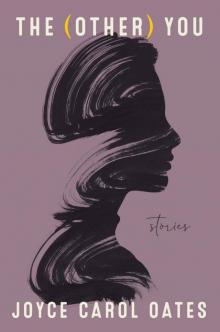 The (Other) You
The (Other) You What I Lived For
What I Lived For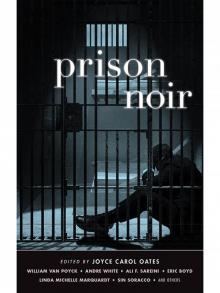 Prison Noir
Prison Noir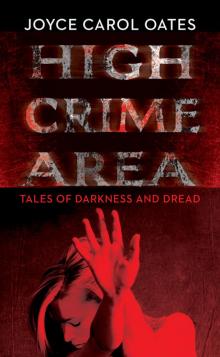 High Crime Area: Tales of Darkness and Dread
High Crime Area: Tales of Darkness and Dread Faithless: Tales of Transgression
Faithless: Tales of Transgression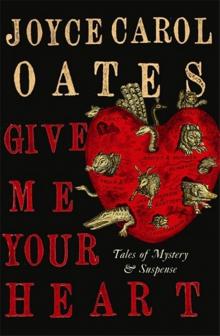 Give Me Your Heart: Tales of Mystery and Suspense
Give Me Your Heart: Tales of Mystery and Suspense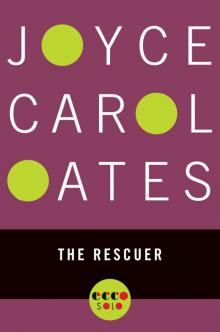 The Rescuer
The Rescuer A Book of American Martyrs
A Book of American Martyrs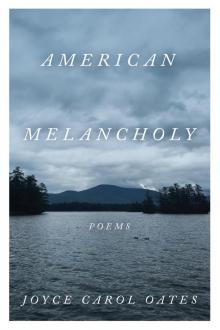 American Melancholy
American Melancholy Double Delight
Double Delight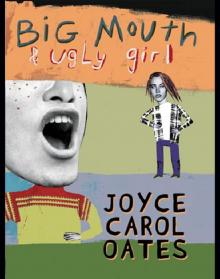 Big Mouth Ugly Girl
Big Mouth Ugly Girl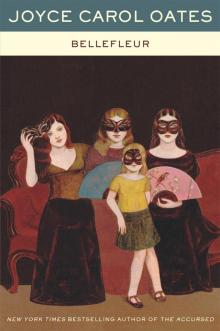 Bellefleur
Bellefleur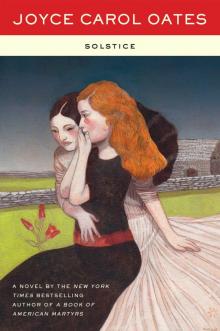 Solstice
Solstice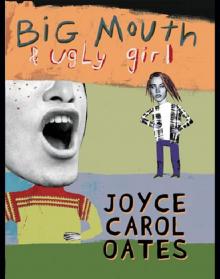 Big Mouth & Ugly Girl
Big Mouth & Ugly Girl Evil Eye
Evil Eye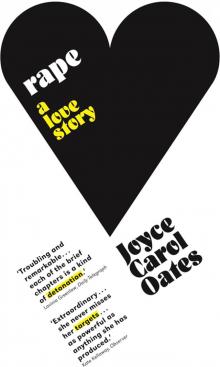 Rape
Rape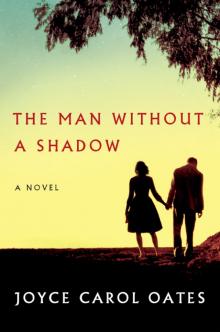 The Man Without a Shadow
The Man Without a Shadow Missing Mom
Missing Mom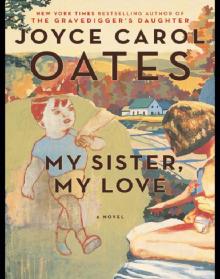 My Sister, My Love
My Sister, My Love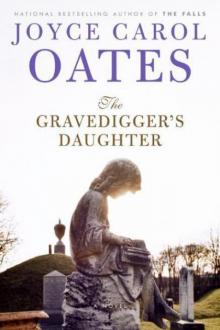 The Gravedigger's Daughter
The Gravedigger's Daughter Beautiful Days
Beautiful Days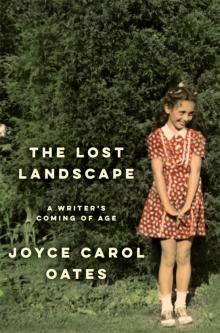 The Lost Landscape
The Lost Landscape Daddy Love
Daddy Love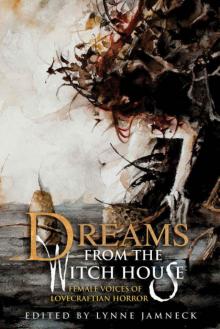 Dreams from the Witch House: Female Voices of Lovecraftian Horror
Dreams from the Witch House: Female Voices of Lovecraftian Horror The Tattooed Girl
The Tattooed Girl Give Me Your Heart
Give Me Your Heart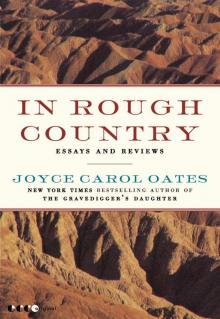 In Rough Country
In Rough Country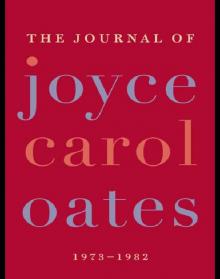 The Journal of Joyce Carol Oates
The Journal of Joyce Carol Oates Black Dahlia & White Rose: Stories
Black Dahlia & White Rose: Stories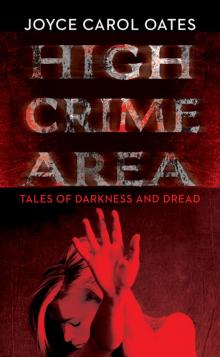 High Crime Area
High Crime Area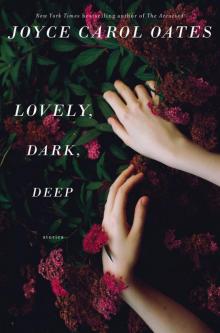 Lovely, Dark, Deep
Lovely, Dark, Deep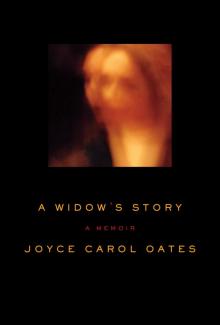 A Widow's Story
A Widow's Story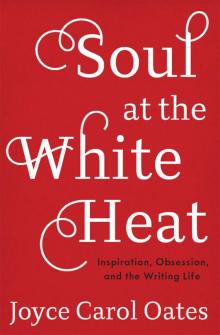 Soul at the White Heat
Soul at the White Heat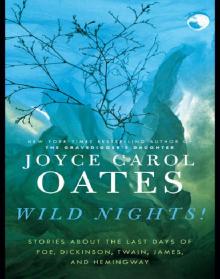 Wild Nights!
Wild Nights!